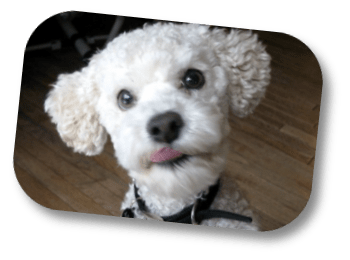Everyone wants to have a well mannered puppy that can easily be taken in public areas and is happy to have people come to the house. Many dogs can be nervous of new situations or people, and try to give us clues to let us know they are uncomfortable with the situation. It is important for us to recognize these clues and respond appropriately to our dogs so they will continue to trust us.
Dogs communicate with each other using a system of body language that we call calming signals. This body language tells other dogs not to be stressed out, and that this dog is trying to defuse a situation it feels uncomfortable with. Dogs will try using calming signals with us if we are doing something that makes them feel uncomfortable. Examples of calming signals are yawning, lip licking, and turning their head to the side. If these calming signals do not work, and the dog feels its efforts to communicate with us are not working, its next avenue of communication is to growl at us.
A dog that growls is not a bad dog. A growling dog is telling us that it is uncomfortable with the situation. If your dog growls, you need to back off for a moment and try to determine what is upsetting your dog before reacting. Please do not punish your dog for growling. By growling, your dog is trying to communicate with you that it is not happy with the situation. This may be someone too close to its face (dogs do not inherently like being hugged), or it may be guarding a resource. If you punish your dog for growling, the next time your dog is in an uncomfortable situation it may not growl since it has been taught not to, and will instead give you no warning until it progresses to its next mode of communication, which is snapping or snarling. If this gets punished then the next time your dog may bite without any warnings to you.




